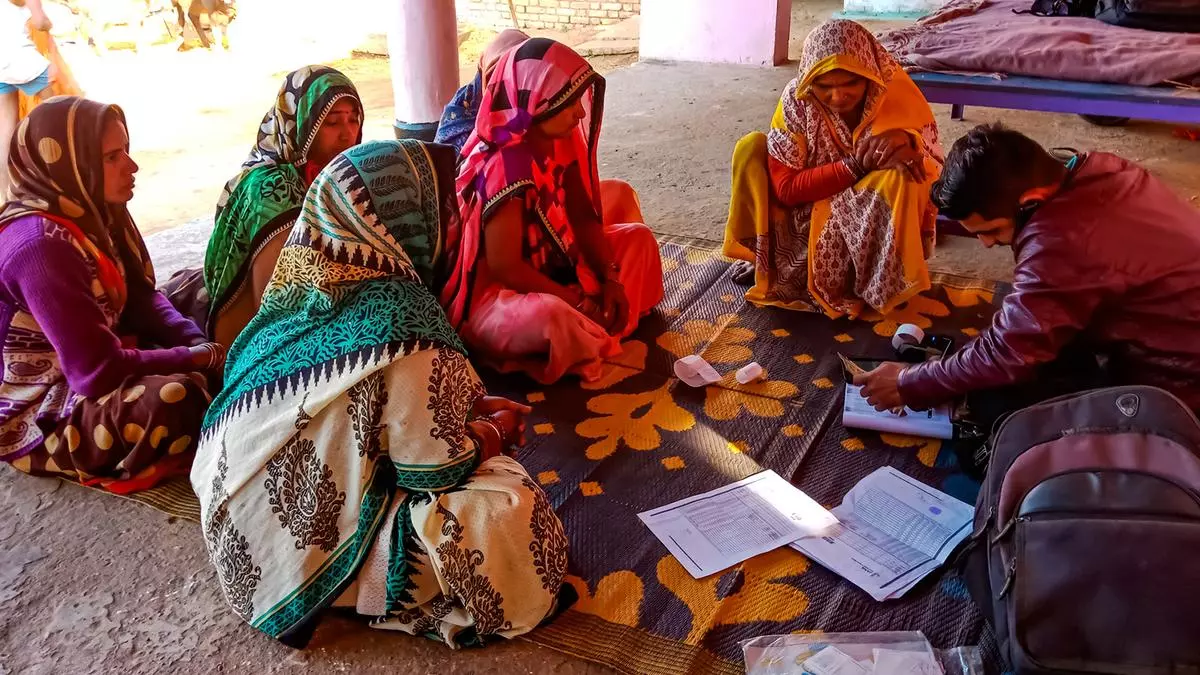MFIs may grapple with muted growth, higher stress in FY25
Microfinance institutions (MFIs) who cater to lower income generating households with small-sized loans are likely to see muted growth and higher stress in the current financial year, experts say.
“In Q1FY25, heat waves affected most parts of country, especially the northern parts. Due to the excess heat, the field staff could not operate normally causing collection issues. The agricultural production was also affected, especially the wheat crop production, causing lower yield this time,” said Jiji Mammen, ED and CEO of Sa-Dhan, a Reserve Bank of India (RBI)-recognised self-regulatory body for MFIs.
“The other reason for slow growth and recovery was the ongoing elections. We also found that some customers have become overleveraged. In some States (Karnataka, West Bengal and Bihar to some extent), there were cases of borrower having 5-7 loans from different lenders,” he added.
According to CareEdge Ratings, the average incremental ticket size of MFI loans has increased to ₹48,322 in Q1FY25 from ₹46,145 in FY24 and ₹41,342 in FY23. Sa-Dhan is set to meet RBI officials on September 23 to discuss sector updates, latest data and steps taken by the body to ensure borrowers are not getting overleveraged.
To restrain such practices, the SRO in its annual meeting of MFI CEOs held in July this year, decided that households with an outstanding loan amount of ₹2 lakh will not be eligible for fresh loans, leading to lower disbursements. Already, the overall outstanding loans of MFIs has moderated to ₹4.33 trillion in Q1FY25 from ₹4.42 trillion in Q4FY24, according to Sa-Dhan data.
Q1FY25 metrics
During Q1FY25, MFIs saw deterioration in the portfolio quality under most buckets, except 180-plus dpd (days past due loans), compared to the corresponding quarter in FY24. A loan becomes non-performing when it remains overdue for over 90 days.
According to the Sa-Dhan data, the portfolio at risk or PAR 30-plus dpd loans increased to 2.7 per cent in Q1FY25 from 2 per cent the previous year. PAR 60-plus dpd slipped to 1.9 per cent from 1.4 per cent, while PAR 90-plus dpd increased to 1.2 per cent from 0.9 per cent. Some comfort came from PAR 180+-plus dpd loans, which slightly improved to 9.1 per cent from 9.7 per cent, Sa-Dhan said.
“My guess is that this year it (growth) could be a bit muted, but as long as your long-term story is intact, and you are dealing with right set of people and there is a wider understanding and agreement that there has to be financial prudence both from lenders’ and borrowers’ side, as an industry we are protected,” said Shalab Saxena, MD & CEO of MFI major Spandana Sphoorty.
Saxena said that employee attrition has become a major issue for the first time in the MFI industry. “I don’t want to call it a wake-up call, but I would say it is a good time for industry to recognise this issue, and do whatever is required to ensure that employee is on your side as they are the primary interface with the customer,” he said.
FY25 guidance
Overall, CareEdge Ratings said that the MFI industry is prone to event-based risk, and rising customer indebtedness, diluting joint liability group model and high attrition, among others.
It expects MFIs’ credit cost — provisions set aside for potential bad loans — to rise to 4.3 per cent in FY25, sharply higher than 2.6 per cent in FY24. Due to the steep rise in credit cost, MFIs’ return on total assets could decline to 2.1 per cent in current fiscal from 4.3 per cent last fiscal. MFIs’ loan growth, too, could moderate to 15 per cent in FY25, from 28 per cent last fiscal.
Giving an early picture of the expected stress in FY25, another MFI major Fusion Finance said since the release of the Q1FY25 results, the management has been focused on tracking the evolving credit behaviour of its borrowers. Consequently, the audit committee of the MFI was briefed by the management on an internal review of the credit quality of the loan portfolio in Q2FY25 and the associated provision that may be required for its current loan book. “In this regard, the management briefed the audit committee that based on trends thus far, in management’s considered view, it is likely that the company may be required to make an estimated credit loss (ECL) provisioning between ₹500 crore to ₹550 crore in Q2FY25, as compared to ₹348 crore provision in Q1FY25,” it said, adding that estimated credit loss provisioning may undergo revisions upon finalisation of the Q2FY25 results.
